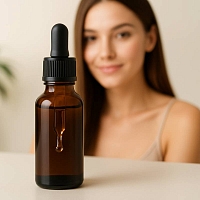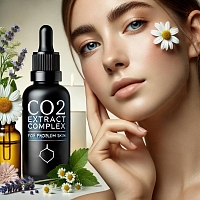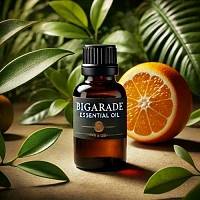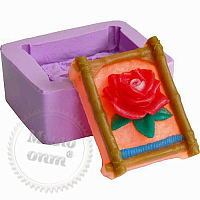-
 Absolutes
Absolutes
-
 Active Complexes
Active Complexes
-
 Actives and Peptides for Cosmetics
Actives and Peptides for Cosmetics
-
 Amino Acids
Amino Acids
-
 Food Flavorings
Food Flavorings
-
 Ayurveda
Ayurveda
-
 Vitamins
Vitamins
-
 Gelling Agents and Thickeners
Gelling Agents and Thickeners
-
 Hydrosols and Floral Waters
Hydrosols and Floral Waters
-
 Hydrolyzed Proteins
Hydrolyzed Proteins
-
 Fragrant and aromatic substances
Fragrant and aromatic substances
-
 Acids, Salts, Alcohols, and Alkalis
Acids, Salts, Alcohols, and Alkalis
-
 Preservatives and Antioxidants
Preservatives and Antioxidants
-
 Cosmetic Raw Materials
Cosmetic Raw Materials
-
 Dyes, Pearlescents, and Glitters
Dyes, Pearlescents, and Glitters
-
 Face Masks, Scrubs, and Dried Flowers
Face Masks, Scrubs, and Dried Flowers
-
 Oils, batters, macerates, oil mixtures
Oils, batters, macerates, oil mixtures
-
 Candle Supplies
Candle Supplies
-
 Melt and Pour Soap Bases
Melt and Pour Soap Bases
-
 Base for cosmetics, cream, serum, shampoo
Base for cosmetics, cream, serum, shampoo
-
 Fragrance Oils
Fragrance Oils
-
 Surfactants
Surfactants
-
 Peelings for Skin
Peelings for Skin
-
 Herbal Powders and Plant
Herbal Powders and Plant
-
 Silicones and Conditioning Surfactants for Hair
Silicones and Conditioning Surfactants for Hair
-
 Raw materials for dietary supplements
Raw materials for dietary supplements
-
 Packaging for Cosmetics and Perfumes
Packaging for Cosmetics and Perfumes
-
 Molds, Packaging, Tools
Molds, Packaging, Tools
-
 Organic Extracts
Organic Extracts
-
 Emollients for Cosmetics
Emollients for Cosmetics
-
 Emulsifiers
Emulsifiers
-
 Essential Oils
Essential Oils
Zinc Pyrithione: The Ultimate Guide for Cosmetic Applications
Introduction
Zinc pyrithione (ZPT) is a coordination complex of zinc and pyrithione with the chemical formula C10H8N2O2S2Zn. It is a commonly used ingredient in cosmetics and personal care products for its antifungal and antibacterial properties. This guide will explore the cosmetic applications of zinc pyrithione, its benefits, and how to incorporate it into your skincare routine.
Benefits of Zinc Pyrithione in Cosmetics
- Anti-dandruff: ZPT is one of the most effective ingredients in fighting dandruff. It works by targeting the Malassezia fungus, which is the primary cause of dandruff. ZPT helps reduce flaking, itching, and irritation associated with dandruff.
- Antibacterial: ZPT also exhibits antibacterial properties, making it effective against acne-causing bacteria. It helps reduce inflammation, prevent breakouts, and promote clear skin.
- Sebum control: ZPT can help regulate sebum production, which is beneficial for individuals with oily skin. It can help reduce pore size, mattify the complexion, and prevent acne.
- Psoriasis: ZPT has shown promise in treating psoriasis, a chronic skin condition characterized by inflammation and scaling. It helps reduce redness, scaling, and inflammation associated with psoriasis.
- Eczema: ZPT can also be beneficial for eczema, a skin condition that causes dryness, itching, and inflammation. It helps soothe irritated skin, reduce inflammation, and improve skin barrier function.
Cosmetic Applications of Zinc Pyrithione
- Shampoos and conditioners: ZPT is most commonly found in shampoos and conditioners for its anti-dandruff and antiseborrheic properties. It helps reduce flaking, itching, and irritation associated with dandruff, while also promoting healthy hair growth.
- Face washes and cleansers: ZPT can be found in face washes and cleansers for its antibacterial and anti-inflammatory properties. It helps remove dirt, oil, and debris from the skin, while also preventing acne breakouts and reducing inflammation.
- Body washes and soaps: ZPT can also be incorporated into body washes and soaps to combat body odor and prevent bacterial infections. It helps cleanse the skin, remove impurities, and keep the body fresh.
- Lotions and creams: ZPT can be added to lotions and creams to soothe irritated skin, reduce inflammation, and improve skin barrier function. It is beneficial for individuals with eczema, psoriasis, or other skin conditions.
- Hair care products: ZPT can be found in various hair care products, such as hair masks, leave-in conditioners, and styling products. It helps nourish the hair, improve manageability, and prevent dandruff.
How to Use Zinc Pyrithione in Cosmetics
- Start with a low concentration: If you are new to using ZPT, it is recommended to start with a low concentration of 1-2%. This will help minimize the risk of irritation.
- Use it regularly: ZPT needs to be used regularly to achieve optimal results. It is recommended to use it at least 2-3 times per week.
- Be patient: It may take several weeks to see the full benefits of using ZPT. Be patient and consistent with your usage.
Safety and Precautions
- Zinc pyrithione is generally considered safe for most people. However, some individuals may experience irritation or allergic reactions. If you experience any adverse effects, discontinue use and consult a dermatologist.
- Avoid contact with eyes and mouth. If ZPT comes into contact with your eyes or mouth, rinse thoroughly with water.
- Keep out of reach of children.
Conclusion
Zinc pyrithione is a versatile and effective ingredient in cosmetics with a wide range of applications. It offers numerous benefits for the skin and hair, including anti-dandruff, antibacterial, and anti-inflammatory properties. If you are looking for a safe and effective way to improve your skin and hair health, consider incorporating zinc pyrithione into your skincare routine.
"| INCI | Zinc pyrithione | |
| Other | ||
| Color product | white, slightly yellowish | |
| Features | shampoos, gels, beldi, ointments | |
| Input percentage | гели для душа при проблемной угреватой коже — 0,8-1%, маски, лечебные мази — 1%, дерматопрепараты при экземе, дерматите — 0,1-0,2%, бальзам для кожи головы — 0,1-0,2%, укрепление ослабленных волос — 0,2-0,4%, пеномоющие средства (гели, шампуни, бельди) — 0,5-1,5%, антиперспиранты — 1-1,5%, консервант для смываемого ухода за волосами — 0,5-1% | |
| Name | Zinc pyrithione, 100 g | |
| Packaging | container for transportation | |
| Packing | 100 grams | |
| Purpose | antimicrobial, bacteriostatic, antifungal, fungistatic, anti-seborrheic, antipsoriatic | |
| Solubility | slightly soluble in water, best solubility at neutral pH 7 | |
| View | powder | |
| Valid until | 10.2026 | |
-
Date:5 DecemberAuthor:Дмитро, БогодуховReviews
Якість інгредієнтів відмінна! Задоволена покупкою.










 Add to cart
Add to cart Buy in 1 click
Buy in 1 click

 Add a review
Add a review To favorites
To favorites To compare
To compare
















